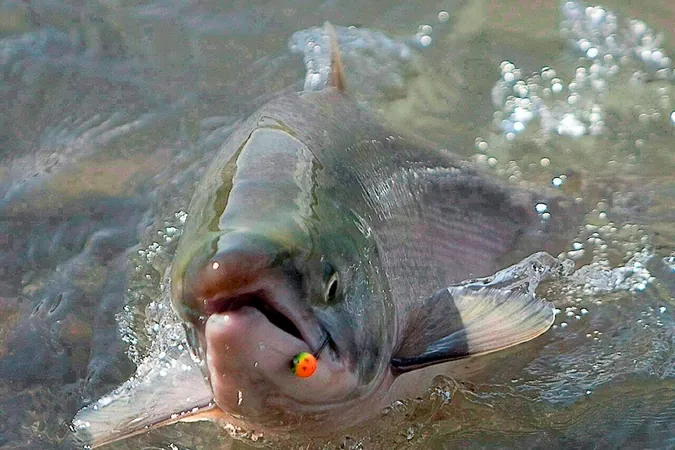
Boosting Salmon Survival: How Anglers Can Make a Difference
2024-11-29
Author: Benjamin
A groundbreaking study has revealed that certain catch-and-release fishing practices are more detrimental to salmon survival than previously believed. Researchers at the University of British Columbia, led by Scott Hinch, discovered that the mortality rate among chinook salmon could skyrocket to 40% due to injuries sustained during the capturing and releasing process, especially in unfavorable environmental conditions.
The research, supported by the Sport Fishing Institute of B.C., emphasizes the need for anglers to adopt strategies that can significantly improve the survival rates of released fish. This includes using smaller hooks, minimizing the handling of fish, and avoiding the use of landing nets. Hinch highlights, “As an angler, you can make essential decisions to ensure that when you are releasing the fish, you’re doing it in the best way possible.”
The study observed chinook salmon caught off Vancouver Island, finding that those released in good condition had short-term mortality rates between zero and eight percent. However, coho salmon displayed less resilience, with a staggering 17% short-term mortality rate. The researchers noted that injuries sustained to eyes, fins, and scales considerably reduced the survival chances of chinook salmon by 15 to 20% within just 10 days of release. Eye injuries were particularly devastating, correlating with an additional 20% increase in mortality after 40 days.
Hinch explains that earlier studies, which primarily monitored fish in holding pens over a shorter timespan, reported lower mortality rates of about 5 to 10%. This new research, however, suggests that catch-and-release fishing is not the ideal solution for salmon conservation.
The findings illuminate a concerning “strong size effect” on survival rates, indicating that smaller chinook and coho salmon are more susceptible to higher mortality compared to larger fish. Every single centimeter reduction in the length of a coho salmon was associated with a six percent increase in mortality just three days post-release. Consequently, Hinch advises anglers to carefully consider whether to keep a fish if it exhibits serious injuries, even if it is smaller than desired.
Recommendations to enhance salmon survival include avoiding the use of shiny fish attractors and treble hooks, as these tactics are linked to an increased risk of injury and mortality. Moreover, if nets are necessary, they should be loose, and fish should remain in the water as much as possible to minimize exposure to air, reducing stress and potential injury.
The research, funded partially through the B.C. Salmon Restoration and Innovation Fund, also highlights the alarming link between climate change and salmon survival. As water temperatures rise above 18°C, salmon face increased stress, leading to lower survival rates when handled. Hinch advises against catch-and-release fishing when water temperatures are at or above this critical threshold.
Hinch and the research team are advocating for anglers to implement these findings into practice, nurturing an understanding and goodwill among fishing communities aimed at preserving salmon populations. With dedication and sensible adjustments to fishing methods, there is hope for the resilience and recovery of B.C.’s iconic salmon in the face of environmental challenges.
The ongoing dialogue in the angling community is not just about the sport; it’s about preserving an irreplaceable part of British Columbia’s ecosystem for generations to come. Are you ready to make a positive change for our salmon? Every angler's choice counts!









 Brasil (PT)
Brasil (PT)
 Canada (EN)
Canada (EN)
 Chile (ES)
Chile (ES)
 España (ES)
España (ES)
 France (FR)
France (FR)
 Hong Kong (EN)
Hong Kong (EN)
 Italia (IT)
Italia (IT)
 日本 (JA)
日本 (JA)
 Magyarország (HU)
Magyarország (HU)
 Norge (NO)
Norge (NO)
 Polska (PL)
Polska (PL)
 Schweiz (DE)
Schweiz (DE)
 Singapore (EN)
Singapore (EN)
 Sverige (SV)
Sverige (SV)
 Suomi (FI)
Suomi (FI)
 Türkiye (TR)
Türkiye (TR)